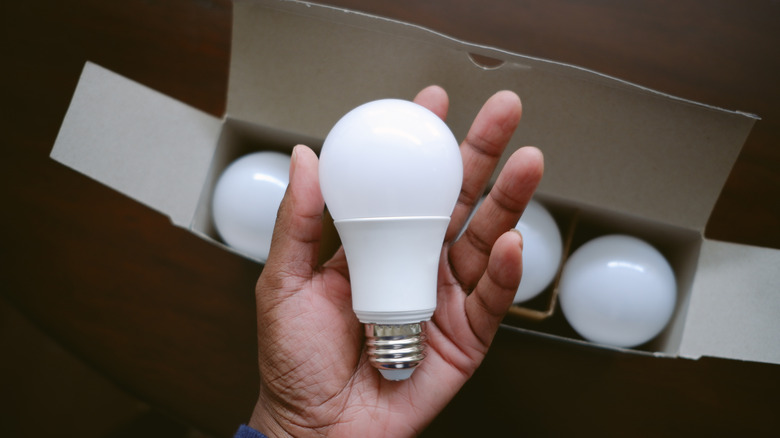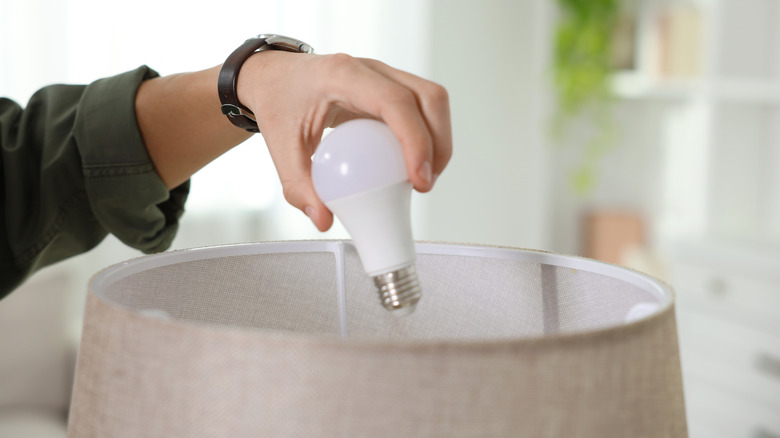Can You Use A Regular Light Bulb In A 3-Way Socket?
It is pretty much a given that, at some point in time, a light bulb is going to burn out somewhere in your home. The good news is that changing a light bulb, or installing a smart light bulb, is a task you can undertake without even the most common of tools found in home kits, as it generally requires only that you unscrew and remove the burned-out bulb, then screw the new bulb into the vacated socket.
The only potential complication in the process is, of course, making sure you are pairing the correct wattage and style of bulb with the socket that held the one that burned out. Though it may seem a touch slight, doing so can be fairly important, as mismatching a bulb and socket could damage either the bulb or the lighting fixture itself. In a worst-case scenario, doing so could even cause a lighting fixture to catch fire.
That being said, some mismatched pairings can still work. For instance, if you were to insert a normal light bulb into a fixture designed for 3-way bulbs that deliver different levels of brightness, the bulb will likely still light. Of course, it would not deliver 3-way functionality, as it is made with just a single filament. That being the case, using a standard bulb in a 3-way socket is not generally recommended, as the socket's varying power levels can limit efficiency or overload the single filament bulb, thus causing a malfunction.
How to know if your bulb is 3-way compatible
Interestingly enough, though some lighting experts recommend you not use a standard bulb in a 3-way socket, they generally agree that taking the opposite approach will, more often than not, work out just fine. However, a 3-way light will only produce one level of illumination in a standard socket, as it's not built with the separate connections required to trigger three levels of light. On top of that, it may bother some to know that the 3-way bulb will likely only function at the highest brightness level.
Given those circumstances, you may now be asking yourself exactly how you can tell whether or not the bulbs you have on hand are 3-way compatible. There are a couple of ways to do so, the easiest being to check the box in which the bulb came packaged. If the bulbs inside are indeed compatible with a 3-way light socket, that fact should be very clearly noted on the cover, along with the precise wattage of each lighting level — with an average range of 40w-60w-100w, and so forth.
If you have a bulb on hand that no longer has a box, there is another easy way to tell if it is 3-way compatible. This way involves looking at the base of the bulb and the socket itself. As those sockets are designed to deliver multiple levels of light, they typically come affixed with an extra connection point, usually a little silver tag adjacent to the primary connector. Yes, the bulb will have a corresponding connection point, which will likely encircle the entire base.

